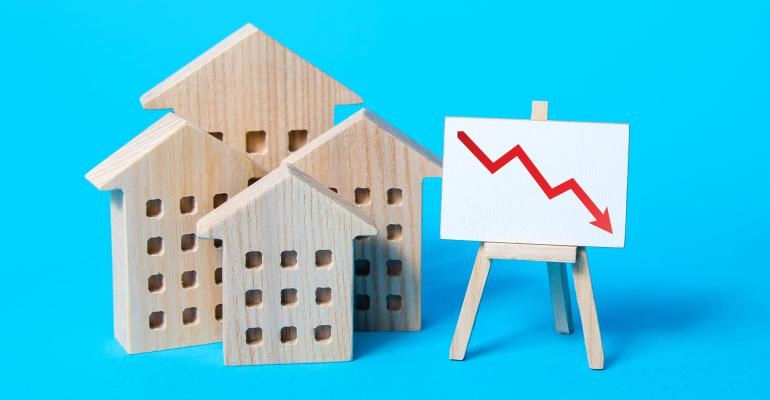Wealth managers with clients interested in making bets on multifamily real estate are struggling to find opportunities to invest because of the spread that remains between buyers and sellers are the market readjusts values in a higher interest rates environment.
“Wealth managers are expecting more than 16 percent internal rates of return (IRRs) says Aaron Cohen, chief operating officer for CGI+, working in the real estate firm's offices in Los Angeles. That’s slightly lower than the prior targets of 18 percent, but to even earn that, project-level returns need to be more than 18 percent.
“Some wealth managers in real estate are still wanting higher internal rates of return in order to invest their capital, but the current market isn’t allowing it to happen,” Cohen says. “Wealth managers are being more cautious and investing less right now.”
High interest rates make it difficult to achieve the yields they expect as limited partners in opportunistic real estate investments. Many still look for value-add deals with an opportunity for very strong rent growth.
“Most deals we are seeing have very little cashflow in the first two years as in place cap rates are much lower than interest rates,” Cohen says. “The high IRRs won’t be feasible—unless general partners are assuming aggressive cap rate reductions on sale or aggressive rent growth (which is hard to believe in this current market).”
Instead, the wealth managers now buying apartment properties are more likely to be buying stabilized, core apartment properties with partners they have worked with in the past.
“These are typically stable assets where they are willing to accept lower returns in exchange for very low risk and a place to invest money rather than let it sit,” Cohen adds.
Very few sales of apartment properties
Investors of all types spent just $6.2 billion to buy apartment properties in January 2023, according to MSCI, Inc., the New York City-based data provider formerly known as Real Capital Analytics. That’s less than half of the monthly volume of deals that closed at the end of 2022, which seemed slow at the time. It’s also 71 percent less than the more than $20 billion in deals closed in January 2022, before interest rates started their relentless rise last year.
“Most of the deals we see in the sales pipeline right now are struggling with massive bid-ask spreads,” says Brennen Degner, co-founder, CEO, and managing partner of DB Capital Management, a private equity group based in Denver. “We are generally 15 to 20 percent off broker guidance on where we are valuing deals we are bidding on.”
With so few deals closing, it is hard to say with certainty what cap rates buyers and sellers are willing to accept. “There just aren’t many data points to look at yet to feel out where the market really is,” says Degner.
Cap rates averaged 4.7 percent in January for sales of apartment properties, according to MSCI. That’s just a few basis points higher than the year before. But MSCI’s RCA CPPI for apartments fell 4.6 percent from a year earlier in January—down 10.3 percent from its peak last summer. Another leading data firm, CoStar, reports cap rates that averaged 5.5 percent for sales of apartment properties in the fourth quarter of 2022, up from 5.2 percent the year before.
“Rising debt costs have contributed to the throttling of apartment transaction volumes,” says Ed Pierzak, senior vice president of research for Nareit. “Establishing market-clearing prices has become challenging as some sellers hold on to old prices. It is important to note that transaction volumes often exhibit seasonality across quarters.”
Other researchers chart an even bigger change in cap rates. “The average multifamily cap rate has now moved up by more than 100 basis points,” says Matt Vance, senior director and Americas head of multifamily research for CBRE. “In markets where cap rates compressed to a greater extent in 2021, we’re now seeing even greater expansion.”
The stock prices of multifamily REITs have had a much stronger reaction to rising interest rates. The new, lower prices implied a cap rate of 5.6 percent in the third quarter of 2022, according to Nareit’s T-Tracker. That’s up from an implied cap rate of 3.9 percent in the fourth quarter of 2021. That is a closer match to the increase in interest rates shown by rising yield on benchmark, 10-year Treasury bonds over the same period.
“Although cap rates do not move in lock step with interest rates, the public real estate market had a meaningful reaction to the surge in the 10-year Treasury yield in 2022," Pierzak says. “The private market response was more measured.”





